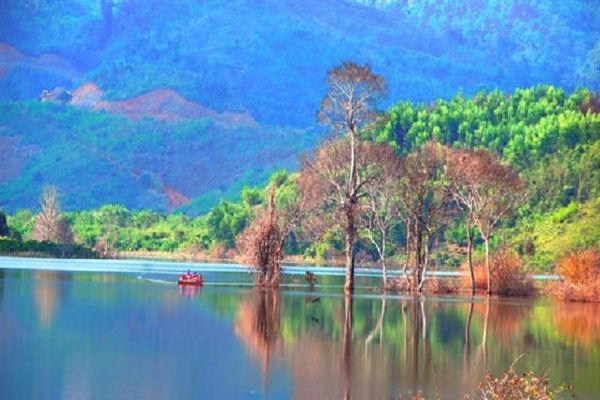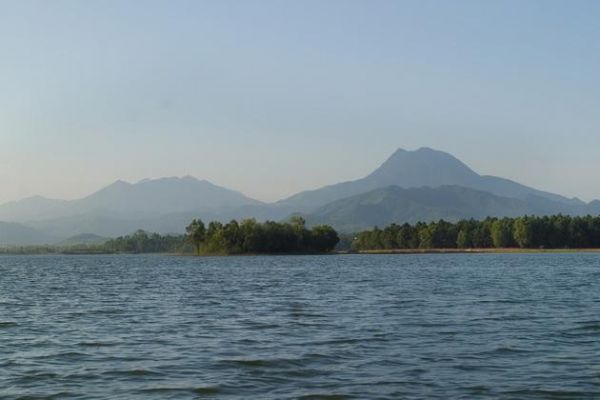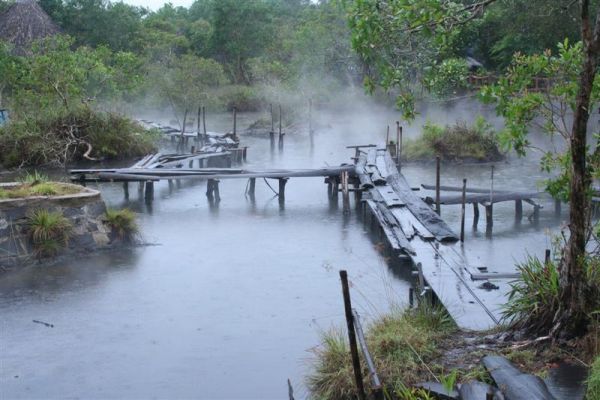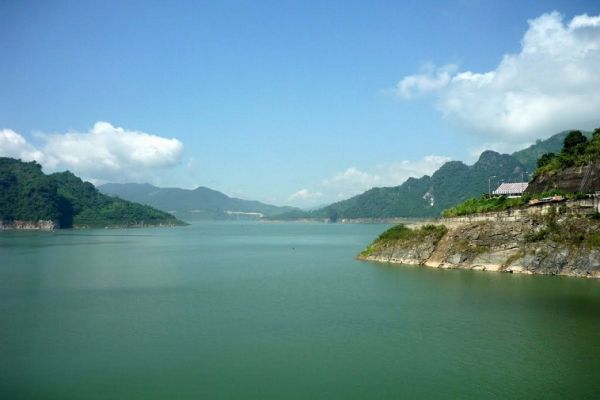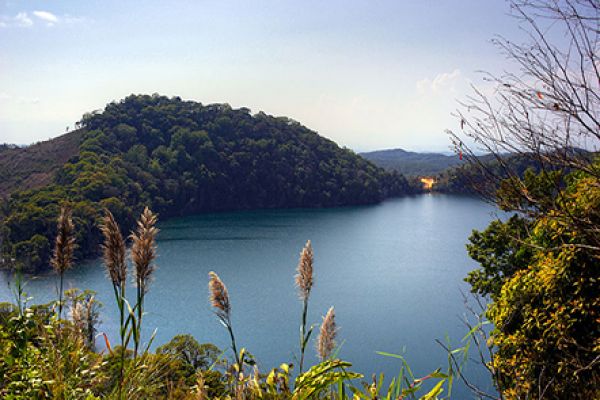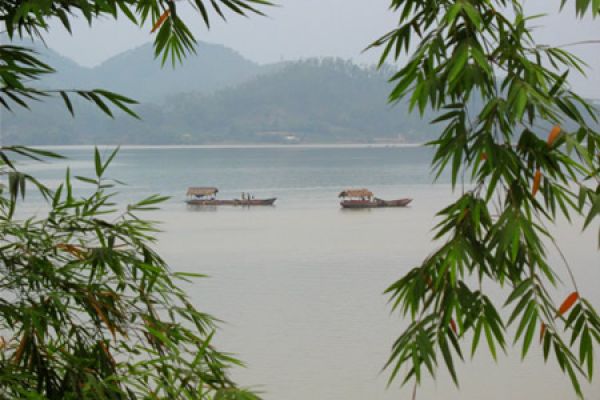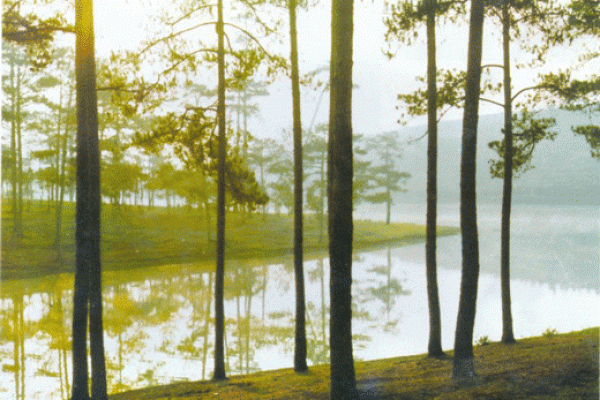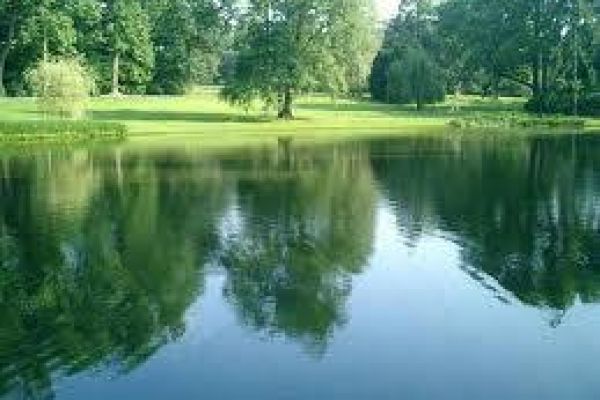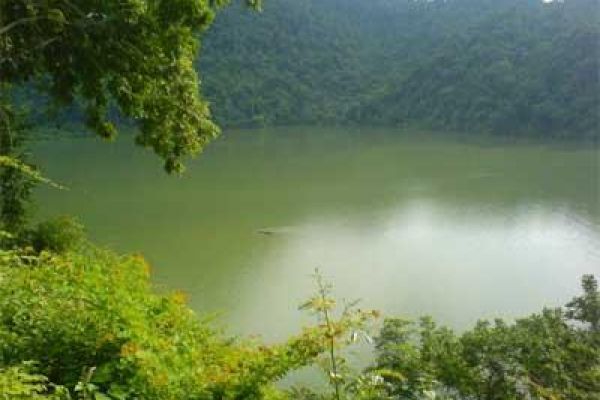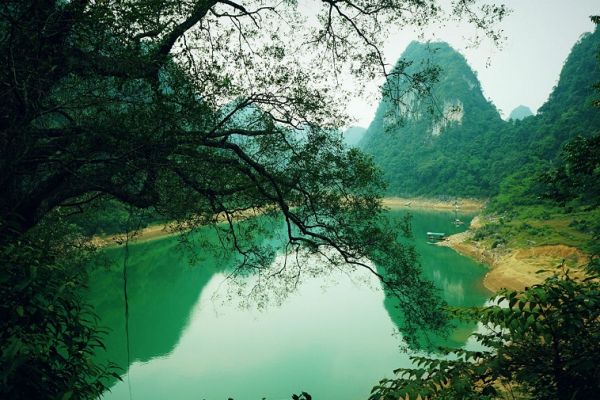Ba Be lake

Ba Be is Vietnam’s largest natural lake and is now the centrepiece of an extensive National Park. The park and the surrounding area is limestone country, so lakes, waterfalls, caves and unusual rock formations abound. The whole area is richly forested and home to many ethnic minority communities.
The National Park is covered by tropical and semi-tropical evergreen Thailandian monsoon forest. The bio diversity is rich – 50 animal species, over 400 plants and many species of insects, reptiles and birds. The ten seriously endangered animals in the park include two primates, the Black Gibbon and the Tonkinese 'snub-nosed' monkey.
Hoan Kiem lake

Ho Hoan Kiem (or Lake of the Restored Sword) was once part of the Red river (song Hong). Throughout thousands of years of geographical changes, the lake moved eastward to its present position kilometers from the river. Before the famous historical legend of King Le Loi here, Hoan Kiem Lake used to be called Luc Thuy Lake (or Green Water Lake) since the water was green all the year round. In 15th century, it was named Hoan Kiem Lake after the legend of Emperor Le Thai To, which is somehow similar to the story of King Arthur and the Lady of the Lake's.
Hoan Kiem Lake is now situated inside a complex of Ngoc Son Temple, The Huc Bridge, Pen Tower in the surroundings, making a sparkling colorful natural picture! Ngoc Son has undergone a lot of renovations, one among which was the addition of Thap But (translated as Pen Tower) on its hill, which was once called Dao Tai. Three words were inscribed on the tower: "Ta Thien Thanh" or "write on blue sky". Inside the gate a pool resembling the shape of an ink well was added. Beyond the ink well is The Huc bridge, which means "where the sun light is absorbed". The bridge leads to Dac Nguyet Lau (or "Moon Light tower") - Ngoc Son shrine. Beyond the gates to the shrine, there are two walls called bang Rong and bang Ho (dragon and tiger slate), where the names of those who passed the national test were inscribed.
To Nung Lake
Located 6km north of downtown Pleiku, To Nung Lake is in fact the crater of a volcano that became extinct millions of years ago. The lake has a surface of 280ha and an average depth of 16 -19m, reaching 40m at its deepest.
The lake owes its name, To Nung, a village that existed a long time ago in the legendary region of Gia Lai and Kontum Provinces, now called Central Highlands. To Nung village was a very beautiful and prosperous one where people lived in peace and harmony with each other. One day the volcano erupted and buried the whole village in hot lava. The lake grew from the tears shed by the survivors mourning their loved ones, to which the name of To Nung was given in memory of the dead village.
Visitors in Vietnam tours can discover To Nung Lake by boat, but they can also choose to enjoy the beautiful landscapes of To Nung from the back of an elephant. In the evening, they can share a dance, a song, or some can wine with some of the local ethnic people, while listening to their traditional gong music.
West Lake
West Lake (Vietnamese: Hồ Tây) is a freshwater lake in the center of Hanoi, Vietnam. With a shore length of 17 km (about 10.6 miles), this is the largest lake of the capital and a popular place for recreation with many surrounding gardens, hotels and villas. A small part of West Lake is divided by Thanh Nien road to form Truc Bach Lake. One district of Hanoi is named after the lake, Tay Ho district.
West Lake is bordered with many significant places in history of Hanoi and Vietnam. Tran Quoc Pagoda, oldest pagoda in Vietnam, was built in 6th century by Lý Nam Đế and now locates on a small island in the middle of the lake. Near Tran Quoc Pagoda is Quan Thanh Temple, one of theFour Sacred Temples of ancient Hanoi (Vietnamese: Tứ trấn Thăng Long). Chu Van An High School, one of the oldest high school in Vietnam, also locates close to the shiy.
Than Tho Lake
Located 6 km to the East from centre of Da Lat, the lake is a nature lake in a silent hill. In the past, there was a small pond in this area that had been called Torô Pang Dong. In 1917, French built a dam here to make a lake reserving water for Da Lat. They called it Lac des Soupirs. This name has the second meaning which is “whisper”.
In the morning, fog covers the water surface and creates such a beautiful water-colour-painting. That’s why this lake also has another name is Suong Mai (fog in the morning).
Once coming to Than Tho lake, visitors in Vietnam travel are going to hear many unhappy love-stories. So this will be an interesting point for curious visitors. This is place where a couple has drowned themselves in order to live together after death. And pines here sways and makes some sound like mourning for them. That’s another reason why people give this lake the name “whisper”.
Noong lake
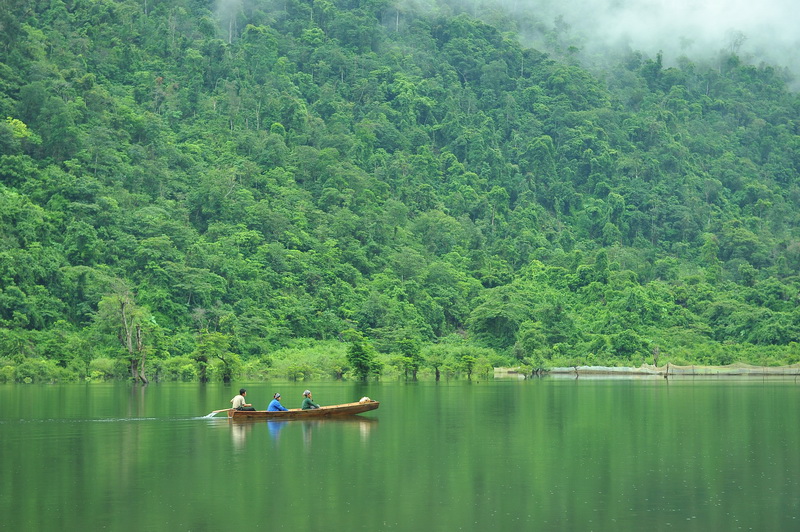
Noong Lake is far from Ha Giang Town about 15km. It is a lake on a mountain with unspoiled nature and the pure beauty like the young girl of an ethnic group. Only a few families of Mong ethnic group live in the area by planting rice and raising ducks and pigs
The first impression of Noong Lake is not so big as it is at the end of dry season, and the lake is nearly empty. We could view lots of trunk of the trees on the lake and with a good imagination. Tourists in Vietnam tours can see the beautiful trees and nearly empty lake on the background. The water was too shallow so the raft that local people used to take people to the lake just turned to be the hut for children to study.
HT
(Collected)

